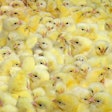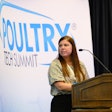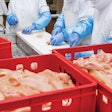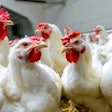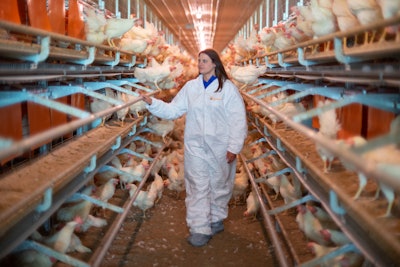
Housing legislation and customer pledges are pushing U.S. egg producers to convert some or all of their production to cage free. Concerning biosecurity, a good program is essential to ensuring a flock’s health status and that efforts to transition are not wasted. In the case of automation, it can help reduce the need for labor, which is greater with cage-free egg production.
These were amongst the messages conveyed by Craig Rowles, DVM, Versova general manager, cage-free production, Max Pfund, Herbruck’s Poultry Ranch associate vice president, production and Bill Snow, Lubing Systems national sales manager at the 2023 Poultry Tech Summit.
Biosecurity improvements are needed
Highly pathogenic avian influenza (HPAI) resurged in U.S. layer flocks in 2022 and has yet to completely subside.
According to Rowles, producers that are converting to cage-free must prioritize biosecurity to prevent outbreaks from occurring.
“We need to keep the outside separate from the inside,” Rowles said.
This includes installing, for example, shower in and out facilities and ensuring that break rooms or storage rooms are secluded. Additionally, houses should be constructed in a way that employees do not need to go inside and outside to perform tasks.
Pfund added that there should be employees assigned to work exclusively inside or outside the houses to prevent bringing HPAI to the birds.
Pfund said, “It’s inconvenient and expensive. But avian influenza is worse.”
Would automation help?
Automation has the potential to solve many of challenges that the poultry industry faces. According to Snow, automation is needed in the egg industry, and specifically in houses, due to the size of cage-free flocks.
According to Rowles, one of the biggest problems that automation could help solve is labor.
“There are fewer people to do the work, but we need twice as many people to do the work. It’s our single biggest problem,” he said.
Pfund added that technology to pick up floor eggs and mortalities would be beneficial, along with automation to clean and disinfect a house when empty.
Snow explained that, currently, much of cage-free production is reactive, but thinks automation could help the producer be more proactive. Snow recommend that this is where future technology development for the U.S. egg industry should be focused.









